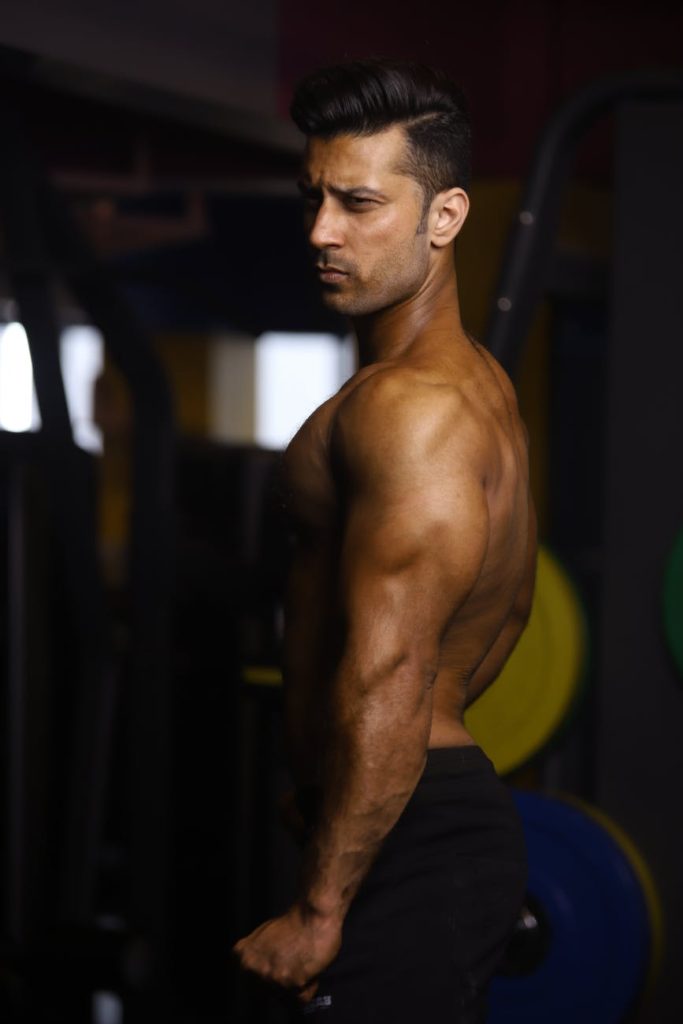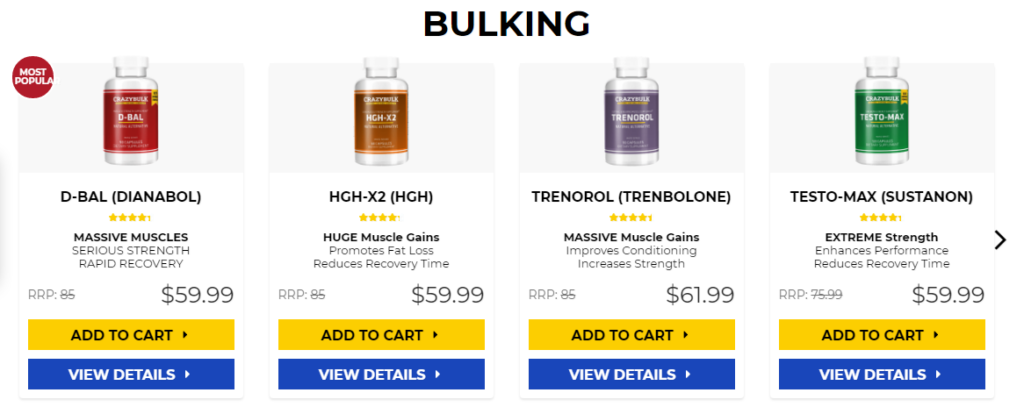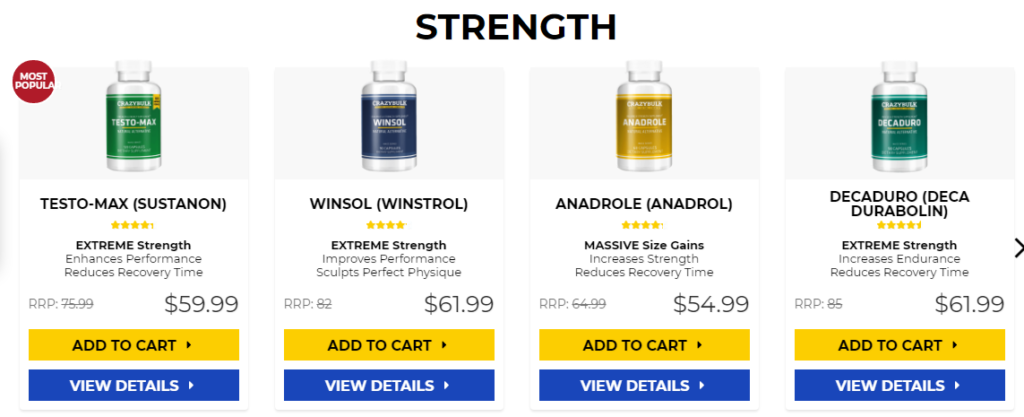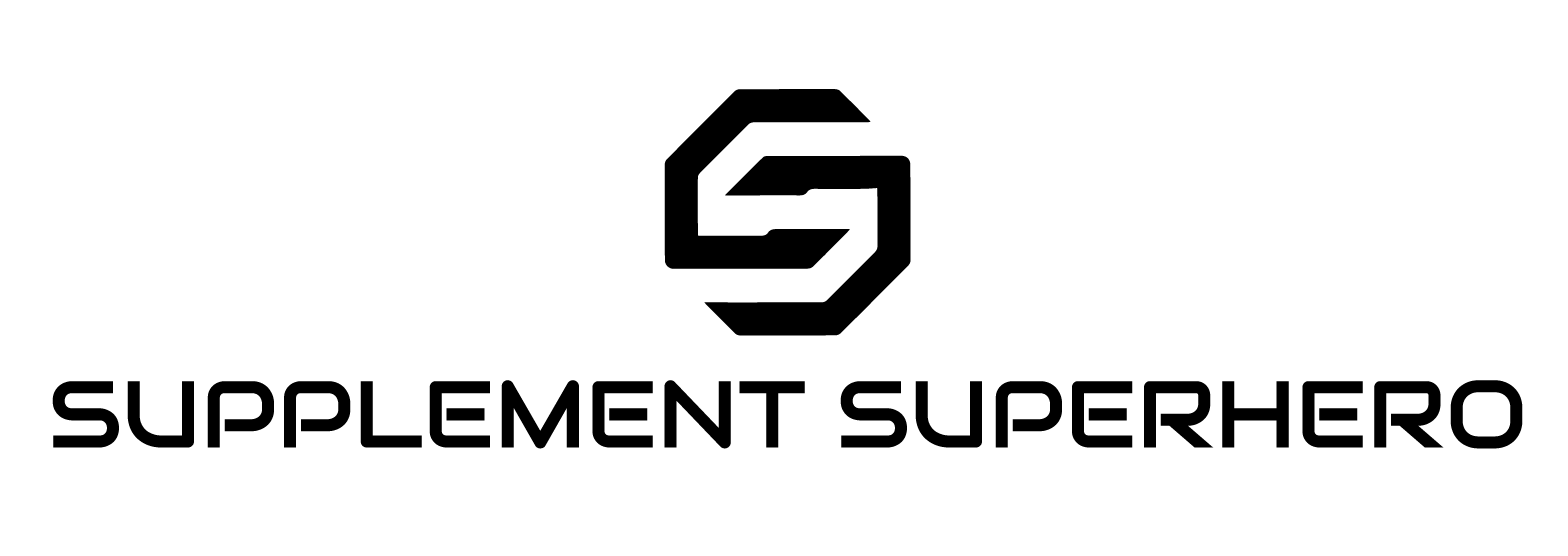
Table of Contents
Introduction
Despite the fact that it is impossible to build massive arms without paying attention to the triceps, these muscles seldom get any love.
In fact, the only time they get their rightful attention is after hundreds of curls fail to create ogle-worthy guns. So, why are triceps sometimes an afterthought?
Well, blame it on their position at the back of the body/arm. Plus, they do have a reputation for being notoriously hard to build.
But, let’s get one thing straight- You are not going to get those huge Cena-esque arms unless you train the triceps.
So, if you’re all set to work on the unsung heroes of your upper arms, continue reading to master how to get bigger triceps fast.
The Great Triceps vs. Biceps Debate!
All you have to do is take a close look at the names of these muscle groups to understand their contribution to the makeup of your upper arms.
- Triceps are composed of (tri) three heads and make up 66% of the muscle mass in your upper arms. They are involved in the push movement of the arms away from the body and are connected to more major muscle groups than the biceps.
- Biceps have two heads and contribute no more than 33% to the size of the upper arms. They work in the exact opposite direction of the triceps, so they are responsible for inward arm rotation or curling towards the body.
- There is also a third muscle group known as brachialis, but we’ll leave that one for another day.
Which of the two is stronger? In terms of size, you already know who has the crown, but strength is another matter altogether and has more to do with genetics and training than anything else.
For instance, some guys are naturally born with stronger triceps, so even a bit of work on this muscle group gets them fabulously big arms.
Since the biceps are opposing muscles, these tend to usually be weak in such folks and this is evident from their long bellied biceps with modest peaks.
Similarly, some men are blessed with stronger biceps and this is apparent from the short belly of the muscle and a notably tall peak but overall thinner arms, particularly when seen from the side and the back.
To cut a long story short, both muscle groups will have to be trained if you want enviably huge arms but how much work each muscle group needs will depend on the natural strength and size of the muscles.
______________________________________________________________________________

______________________________________________________________________________
Are triceps truly hard to train?
In terms of type of muscle, the triceps are no different from the biceps, with fast twitch muscle fibers contributing almost 70% to their makeup.
This means that both muscle groups respond exceptionally well to heavy weight training and they do wear out quickly.
But, there are a few things that you need to understand:
More muscle means more work: Triceps are not innately harder to build than the biceps, but the fact is that they are double the size of the biceps.
So, the larger muscle mass calls for twice as much work. On the plus side, because you are working on more muscle by volume and size, the results of triceps training are more dramatic than those of biceps training.
It takes time for the small guys to get big: In the big scheme of things (i.e among all skeletal muscle structures) the triceps and biceps are the small guys. So, you are not going to get over-night results with these muscle groups.
Triceps are happy to share your attention with others: There is a flawed perception that isolated muscle training is all that’s needed to get those big arms. In reality, almost 80% of the arm growth comes from compound chest, back and arm training.
In fact, it would be futile to move to isolated arm training unless you have already gained all that you can from upper body compounds.
So, novices should certainly wait until they have logged in a few months’ worth of training before moving to dedicated arm workouts.
All of your triceps need your love: The triceps is a single muscle with 3 heads, and the largest of these is the lateral head. Given its bigger size, many people focus all their attention exclusively on it, and that’s where they go wrong.
Big triceps are not just about big laterals; in fact, the only way to bring out the famed horse shoe shape is to work on all three heads.
So, now that the myths have been debunked and facts stated, it’s time to get to the meaty sections of how to build beefy arms.
______________________________________________________________________________

______________________________________________________________________________
The Diet
Tip 1: A big diet for big triceps!
Here is the truth- A calorie deficit works for weight and fat loss but not for building muscle! The fact is that you can’t grow big without eating big because:
1.What you eat has a direct impact on your muscle growth, and, no, this is not just about protein.
2.In a hypo-caloric scenario, your catabolic hormones surge while your anabolic hormones plunge. In turn, this increases the rate at which proteins degrade. So, the macronutrient is thrown out of the body before it has the chance to make an impact.
3.Unless you give your body enough calories to synthesize the proteins, they won’t go towards building your muscles.
4.Without enough energy, there is no way you can plow through those taxing compound lifts and isolated training.
So, you will have to eat enough of the right foods, but will it be enough to feed yourself just as much as you need?
Think of it this way, if you want to go an extra mile, you will need extra fuel. In other words, you will need what is called a calorie surplus. And that brings us to the all-important question, how much is too much?
A popular misconception is that you need to eat a lot more than what you need to beef up. But all that’s going to do is pile on fat-inches.
The idea is to give your body just a bit more energy so that there is no hindrance to muscle gain. And that can be achieved with a mere 5% to 10% added on top.
Your aim should be a modest gain of 2-4 lbs/month and a calorie surplus in the range of 5-10% will get you there.
That said, macro-management is a large part of the muscle gain-equation. In other words, the calories have to come from the right source.
Tip 2: Macro-management for muscle building
Muscle gain centers on balancing 3 macros- proteins, carbohydrates and fats.
Of these 3, protein is a no-brainer really. If you have spent any amount of time in the fitness space, you must already know that protein offers amino acids that are literally the building blocks of muscle tissue.
Hence, a high protein diet will definitely be needed to build those triceps and 1-1.5 gm. of protein/kg. of body weight will get you there (1). The confusion is over the intake of carbs and fats.
There are those out there who recommend, high protein, high carb and low fat plans and others who swear by the high protein, low carb, high fat diet. So, which one will work for you?
Despite the bad rep they have received, carbs are not exclusively responsible for weight gain. In fact, when it comes to muscle gain, carbs can be your friends because of three reasons:
· Carbs give you the energy you will need to get through the grueling workouts and to recover after them (2).
· Carbs replenish glycogen stores in the muscles that get depleted during weight training.
· Carbs lead to the release of insulin, which indirectly creates an anabolic environment that is conducive to muscle growth.
So, a low carb-diet won’t help much because depleted glycogen stores in the muscle have a direct bearing on the cell signaling needed for muscle growth (3).
Furthermore, several studies have revealed that a high protein, high carb diet significantly reduces muscle loss in body builders as compared to a high protein and low carb diet (4).
This leaves you with the last of the triad of macronutrients-fats.
The amount of protein is non-negotiable, so something’s gotta give, when you talk about the other two. If you go for a high carb diet, it will have to be low fat and vice-versa.
However, a lot of experts want to go with or even above the recommendation of fats making up 20% to 35% of the total daily calorie requirement. They bandy the hormonal benefits of a high-fat diet to justify their stance.
In reality, you get a mere 13% boost in testosterone levels if you take your fat intake from a modest 18% to a whopping 40% of your daily calorie requirement (5).
There are two problems with this approach:
1.A 13% gain in testosterone may seem big but it is not going to do you much good in terms of muscle gain.
You’ll need to achieve 100%-300% increase in testosterone levels for it to actually show up in muscle growth and that can only happen with steroids.
2.You would have to reduce your carb-intake to make room for fat calories.
But, if you do that you will pare any gains that you get from the 13% testosterone increase because low carbs will create a high cortisol and low testosterone scenario in your body (6).
Hence, you would certainly be better off on a high carb and low fat diet and that can be achieved by keeping your fat-intake at 0.3 gm per pound of fat free mass, which works out to 10-15% of daily calorie intake.
As far as carbs go, you will be in your muscle-building sweet spot for upper body training with 2 times the grams of carbs per pound of body weight.
So, your macro-balancing should be aimed at fulfilling your daily caloric requirement with:
· 30-35% from protein
· 50% from carbohydrates
· 15%-20% from fats
Bonus tips
1.Timing does not matter nor do the number of meals as long as your macros are balanced. You could split your calorie intake over 3 meals or 6 meals and you’d still be hitting the nail on the head.
2.Get some amount of protein pre and post workout so that your body gets the raw material needed to build muscle. About 0.4 gm/ kg of body weight should be good, which works out to 30-40 grams pre and post training.
3.You will also need to fuel your workouts with pre and post training carb intake. Before training, give your system about 0.8- 1 gm/ kg of carbs and to restore your glycogen stores post workout, go for 0.5-1 gm/kg.
4.Whey protein is convenient, but skim milk powder works just as well.
5.The majority of your carbs-intake should be complex or slow-digesting carbs such as vegetables, fruits and whole grains, etc.
But, post workout, you will need an insulin spike to restore the glycogen level in your muscles and for this, you should use fast-digesting carbs such as a white bread or a sports drink, etc.
6.Get your fats from healthy sources such as olive oil, fish, nuts and avocado, etc. Also, stay away from artificial trans fats, while limiting your intake of saturated fats to under 10% of your daily calories.
______________________________________________________________________________

______________________________________________________________________________
Exercise
When working on the triceps, especially for fast results, it’s easy to chase that pumped-up feel. Unfortunately, this will seldom get you the desired results.
Instead, what you should be going for is strength-building. Muscle growth comes naturally when you aim for strength increase and heavy compound training will send your muscle strength soaring.
Take a look at these compound movements that work exceptionally well for triceps growth:
1. Close grip bench press
This one is widely regarded as one of the best compound movement for building triceps. It’s simple, requires no fancy techniques yet yields stupendous results.
You should be working at 65% to 90% of your weight range for one rep max, so you will get best results when using heavy loads with fairly low reps (about 6-8).
Although you could opt for lighter loads and higher reps (about 8-12), when working on the triceps, heavy loads yield the maximum activation (7).
Because a narrow grip offers the maximum activation of the long head, keep your hands at or just a bit inside shoulder width. Remember, going too narrow with your grip will exert intense strain on the wrists and the shoulders.
Descend down in 3-4 seconds while keeping your elbows tight and then contract the tris to go into an extension. Using a slightly declined bench on the Smith Machine will give you better stretch in the long head. Aim for 3-4 sets of 6 -8 reps each
2. Overhead extensions (for the long head)
Although this movement targets the long head, do it before any move for the lateral head because once muscle fatigue creeps in and glycogen levels plunge, you will find it extremely hard to bust out the overhead moves.
You can choose from a couple of variations for overhead extensions such as:
· One-arm standing dumbbell extension
· Lying dumbbell extension
· Overhead cable extension
All three offer about 76- 80% muscle activation but the overhead cable extension is easiest on the wrists and the elbows, particularly if you intend to use heavy weights.
To ensure better isolation of the tris during overhead extensions, ensure that the movement comes from the forearms and not the upper arms. Go for 3-4 sets of 10-15 reps each.
3. Tricep pushdowns (for the lateral head)
This movement emphasizes the lateral head more than any other triceps exercises (8).
You can do it with a rope or a bar, but you’ll get a slightly higher muscle activation of 74% with the rope as compared to the 67% muscle activation offered by the bar.
For this move, an overhand grip is the best and exerts the least stress on the wrists. Go for 3-4 sets of 10-15 reps each.
4. The dips (for the medial head)
Dips are another way to lift heavy and give the tris a sound workout, which explains their popularity as an all-rounder triceps movement.
Plus, they are not as hard on the wrists and you get a couple of variations of this move, so that you can change things when you hit a plateau.
You can take your pick from standard triceps dips, bench dips, weighted dips, machine/assisted dips.
If you don’t have any experience with this compound, it would be best to start with bench dips and then graduate to standard tri dips and others.
Regardless of the bench dip station used, this is the way to do a dip:
· Start with a nice, tight grip in the top position.
· Lower your body slowly, taking a good 2-3 seconds.
· Before you press yourself up and out of the dip, lean forward slightly.
· Squeeze the tris as hard as you get to the top.
· Shoot for 3-5 sets with 10-15 reps in each.
Bonus tips
1.If you have reached a plateau with bench dips, and the close grip bench press, push yourself harder with weighted dips and reverse grip bench presses.
2.Hit your arms 2-3 times a week without increasing volume, this will keep the muscles fresh each time by keeping the workload in check.
3.If your shoulders are giving you trouble with bench dips, opt for diamond pushups which are harder, hence more effective, but gentler on the shoulder joints.
4.On your last move, go on until the point of complete muscular failure.
5.Don’t train your chest, shoulders the day before or after you train your arms.
6.Fry the tris by pushing yourself for 1-2 sets (every move) past failure.
7.Keep your elbows tucked in to keep the joints safe and for maximum engagement of the triceps.
______________________________________________________________________________

______________________________________________________________________________
References Cited
(1) https://www.ncbi.nlm.nih.gov/pubmed/7550257
(2) www.asep.org/asep/asep/JEPonlineDec2009Lamont.doc
(3): http://www.ncbi.nlm.nih.gov/pubmed/15879168)
(4) http://www.ncbi.nlm.nih.gov/pubmed/21558571
(5) http://www.ncbi.nlm.nih.gov/pubmed/8942407
(6) http://www.ncbi.nlm.nih.gov/pubmed/20091182
(7) https://www.ncbi.nlm.nih.gov/pubmed/9134365
(8) https://www.ncbi.nlm.nih.gov/pubmed/16095407
Other references:
· https://www.acefitness.org/certifiednewsarticle/1562/ace-sponsored-research-best-triceps-exercises/
· https://www.ncbi.nlm.nih.gov/pmc/articles/PMC6036131/
· https://www.acsm.org/docs/default-source/files-for-resource-library/protein-intake-for-optimal-muscle-maintenance.pdf?sfvrsn=688d8896_2
· https://www.menshealth.com/fitness/g19547150/best-tricep-workouts/
· https://www.mensjournal.com/health-fitness/5-most-effective-methods-building-bigger-triceps/
· https://www.mensjournal.com/health-fitness/how-solve-3-biggest-triceps-training-problems/no-growth/
· https://www.mdpi.com/2411-5142/3/2/28/htm
· https://www.ncbi.nlm.nih.gov/pubmed/28677940
· https://www.ncbi.nlm.nih.gov/pmc/articles/PMC3831787/ https://www.ncbi.nlm.nih.gov/pubmed/27669189
